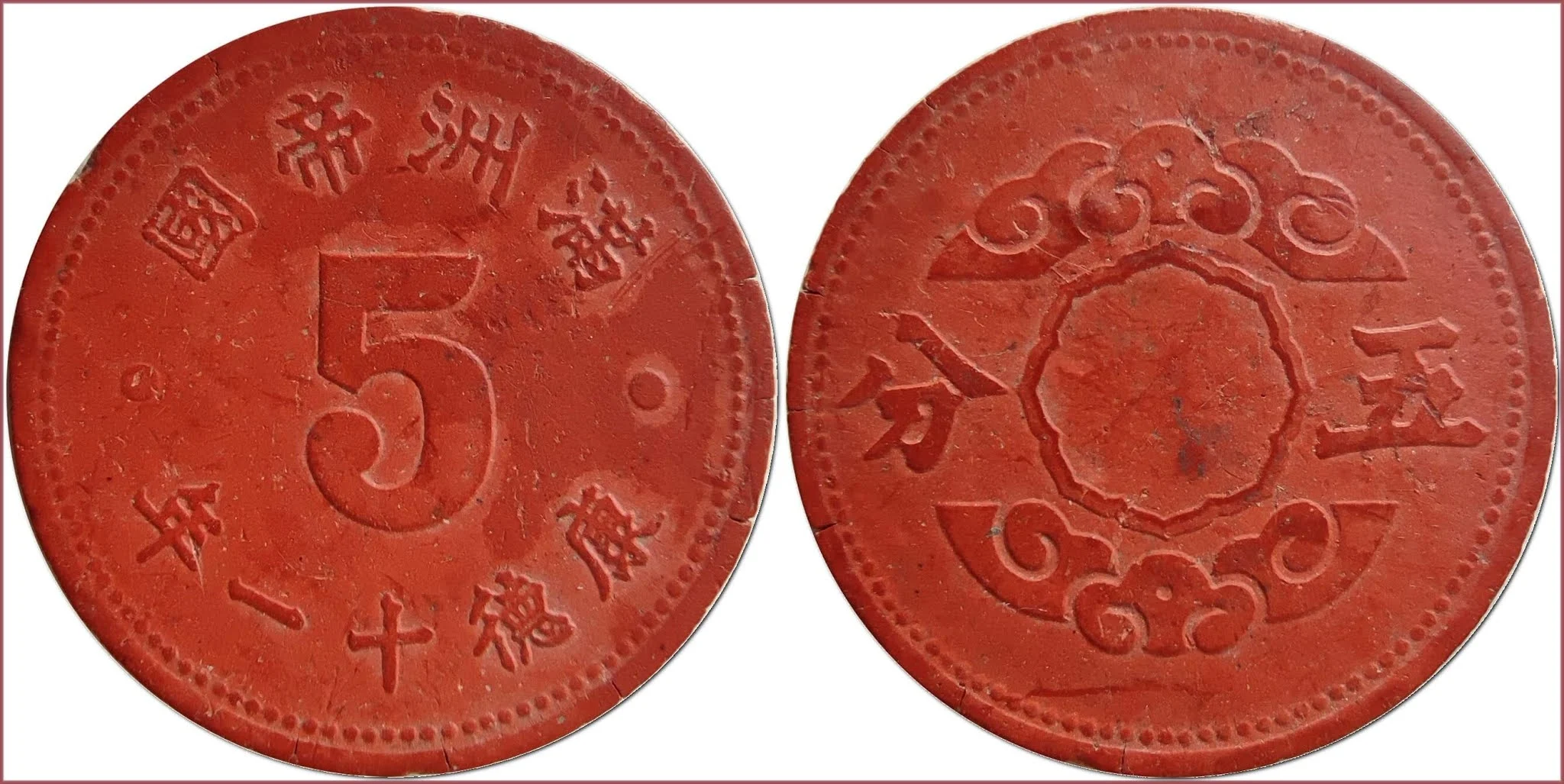FEN: COIN OF MANCHUKUO (CHINA)
5 fen (分), 1944: Empire of Manchuria
Rarity in old numismatics: not a metal coin /at the end of World War II, Japan, which controlled this territory of China, experienced a critical shortage of metal for military purposes/.
Manchukuo (State of Manchuria prior to 1934 + Empire of Manchuria after 1934) — a puppet state of the Empire of Japan in Northeast China and Inner Mongolia (1932-1945).
Ruler: Puyi — nominal Emperor of Manchukuo.
Date on coin: 11 /the Japanese installed Puyi as Head of State in 1932, and two years later he was declared Emperor of Manchukuo with the era name of Kangde (era of "Tranquility and Virtue")/.
國帝洲滿: Empire of Manchuria.
年 一十 德康: Year 11 of Kangde era.
分 五: Five fen.
Flower cartouche between symbolic clouds.
- Red fiber: 20 mm - 1.2 g
- Reference price: 11$
COIN FEN — WHERE & WHEN (coins catalog: by names & emitents)
- STATE OF MANCHURIA (1933-1934) + EMPIRE OF MANCHURIA (1935-1945): fen = 1/10 chiao = 1/100 yuan
- ... a lot of different Chinese issuers
Fen has been issued for several centuries by many dozens of different state formations (nowadays it’s the territory of China /PRC/), which can be systematized into the following groups:
Regarding etymology of the fen coin name, reliable data on the nature of the word's origin could not be found. However, it is known that the hieroglyph, which denotes a coin, literally means "minute", but in a broader sense, it is used to denote a tenth of something. In this case, we are talking about a tenth of the more expensive Chinese coin — jiao. It is worth noting that the fen was sometimes called cent in parallel (for example, the fen of the Republic of China in the early 20th century).

